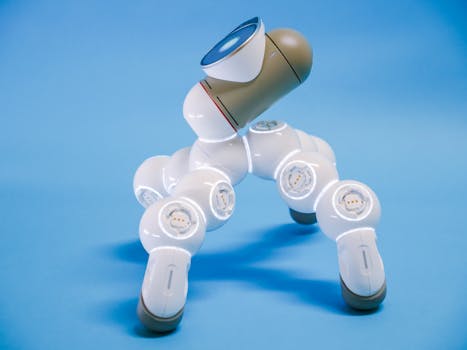Automated Upholstery: Achieve Perfect Precision Every Time
Introduction
Ever found yourself staring at a beautifully upholstered piece of furniture, wondering how on earth they achieved such flawless corners and perfectly stretched fabric? For years, upholstery has been a craft steeped in tradition, relying heavily on the skilled hands of artisans. But what if there was a way to capture that same level of perfection, but with a consistency and speed that defies human limitations? That’s where the exciting world of automated upholstery comes in.
In today’s fast-paced manufacturing landscape, achieving unwavering quality while keeping up with demand is a constant challenge. Traditional upholstery, while offering a unique charm, can be time-consuming, prone to human error, and difficult to scale efficiently. This is precisely the problem that automated upholstery aims to solve. If you’re a furniture manufacturer, a designer looking for cutting-edge production methods, or simply curious about the future of interior design, you’re in the right place. In this post, we’ll explore what automated upholstery truly means, delve into its core components, showcase its real-world applications, and discuss its undeniable advantages and potential drawbacks. Get ready to discover how technology is revolutionizing the way we create beautifully upholstered furniture.
What Exactly is Automated Upholstery?
At its heart, automated upholstery refers to the use of advanced technology and machinery to perform various stages of the upholstery process. Think of robots, specialized software, and precision-engineered equipment working in harmony to handle tasks that were once solely the domain of skilled human hands. This isn’t about replacing the artistry of upholstery entirely, but rather about augmenting it with unparalleled precision, speed, and repeatability.

The goal of automated upholstery is to produce furniture with consistently high-quality finishes, minimizing defects and maximizing efficiency. This can range from automated fabric cutting and pattern matching to robotic arms that precisely stretch and secure fabric, and even automated sewing and fastening systems. The relevance of this technology today cannot be overstated. As consumer demand for customized and high-quality furniture grows, manufacturers are under immense pressure to deliver. Automated upholstery offers a solution to meet these demands head-on, ensuring that every piece produced meets stringent quality standards, regardless of production volume.
A Deeper Dive into the Components of Automated Upholstery
The implementation of automated upholstery isn’t a one-size-fits-all solution. It’s a sophisticated ecosystem of interconnected technologies, each playing a vital role in achieving that perfect precision. Let’s break down some of the key components:
- Automated Fabric Cutting: This is often the first step. High-precision CNC (Computer Numerical Control) cutting machines, equipped with various blades and tools, can cut intricate fabric patterns with extreme accuracy. They can read digital patterns, ensuring that every piece of fabric is cut to exact specifications, eliminating waste and the need for manual tracing and cutting. This is a fundamental aspect of automated upholstery, setting the stage for the subsequent steps.
- Robotic Fabric Stretching and Placement: This is where the magic truly happens in automated upholstery. Imagine robotic arms equipped with specialized grippers and vacuum systems that carefully pick up, stretch, and place fabric onto furniture frames. These robots can apply consistent tension across the fabric, ensuring smooth, wrinkle-free surfaces and perfectly fitted corners. They are programmed with precise movements, guaranteeing that the fabric is positioned exactly where it needs to be, every single time.

- Automated Fastening and Securing: Once the fabric is in place, it needs to be secured. Automated systems can utilize pneumatic staplers, specialized adhesives, or other fastening mechanisms to attach the fabric to the frame. These systems ensure that staples are driven at the correct depth and angle, providing a secure and aesthetically pleasing finish. This meticulous fastening is crucial for the longevity and appearance of the upholstered piece, and automated upholstery excels here.
- 3D Scanning and Digital Templating: Before any automated process can begin, an accurate digital representation of the furniture frame is essential. 3D scanning technology can create precise digital models, which are then used to generate cutting patterns and robotic pathing. This allows for highly accurate digital templating, which is the backbone of effective automated upholstery.
- Advanced Software Integration: Behind all the hardware lies intelligent software. This software manages the entire process, from translating 3D models into cutting instructions to programming robotic movements and ensuring seamless integration between different machinery. It’s the brain of the operation, orchestrating the complex dance of automated upholstery.
- Quality Control and Vision Systems: To truly achieve perfect precision, automated systems often incorporate vision systems and sensors. These can inspect the fabric for defects, monitor the stretching tension, and verify the placement of the fabric. Any deviations from the norm are immediately detected, allowing for corrections or flagging of pieces that require further human inspection. This commitment to quality is a hallmark of automated upholstery.
By integrating these technologies, automated upholstery can drastically reduce production times, improve consistency, and elevate the overall quality of upholstered furniture. It’s a sophisticated approach to a time-honored craft.
Real-World Applications and Success Stories
The impact of automated upholstery is already being felt across various sectors of the furniture industry. From high-volume production lines to specialized custom furniture makers, the benefits are becoming increasingly apparent.
Consider the automotive industry, where precision and consistency are paramount. Many car interiors, from seat covers to door panels, are now upholstered using highly automated processes. This ensures that every vehicle rolling off the assembly line has a flawless interior finish, a testament to the power of automated upholstery.
In the commercial furniture sector, where large orders for hotels, offices, and public spaces require rapid turnaround times without compromising on quality, automated upholstery is a game-changer. Imagine fitting out a large hotel chain; the ability to produce hundreds or thousands of identical, perfectly upholstered chairs or sofas quickly and efficiently is invaluable. Companies that have adopted automated upholstery report significant reductions in production lead times and a decrease in returned or rejected items due to quality issues.

Furthermore, even in the realm of high-end residential furniture, automated upholstery is finding its niche. While the artistry of hand-crafted upholstery will always have its place, manufacturers are leveraging automation to achieve intricate designs and perfect finishes that are incredibly difficult to replicate consistently by hand. This allows for greater design complexity and a more predictable outcome.
For a closer look at how these systems work in practice, you might find our blog post on Optimizing Furniture Production Workflows insightful. It touches upon many of the efficiencies gained through technological integration, including aspects relevant to automated upholstery.
An excellent external resource for understanding the advancements in robotic automation within manufacturing, which directly applies to automated upholstery, can be found on the Robotics Industries Association website. They offer a wealth of information on the latest trends and applications.
The Advantages and Disadvantages of Automated Upholstery
Like any technological advancement, automated upholstery comes with its own set of benefits and challenges. Understanding these is crucial for any business considering its implementation.
| Pros | Cons |
|---|---|
| ➕ Unmatched Precision and Consistency: Robots and automated systems eliminate the variability inherent in manual processes, ensuring that every upholstered item meets the exact same high-quality standards. This is the core promise of automated upholstery. | ➖ High Initial Investment: The cost of acquiring and implementing advanced automated machinery and software can be substantial, requiring significant capital outlay. |
| ➕ Increased Speed and Efficiency: Automated processes can operate continuously and at much higher speeds than manual labor, dramatically reducing production times and increasing output. | ➖ Limited Flexibility for Highly Custom or Complex Designs: While automation excels at repetition, highly intricate or truly one-off designs might still require significant manual intervention or custom programming, which can be complex and costly. |
| ➕ Reduced Labor Costs in the Long Run: Although there’s an initial investment in machinery and training, automation can lead to lower labor costs per unit over time, especially for high-volume production. | ➖ Need for Skilled Technicians: Operating and maintaining sophisticated automated upholstery systems requires a different skill set than traditional upholstery. This means investing in training or hiring specialized technicians. |
| ➕ Minimized Material Waste: Precise fabric cutting and optimized placement significantly reduce fabric offcuts and errors, leading to less material waste and improved profitability. | ➖ Potential for Obsolescence: Technology evolves rapidly. There’s a risk that automated systems could become outdated, requiring further investment to stay current. |
Ultimately, the decision to adopt automated upholstery hinges on a business’s specific needs, production volume, and strategic goals. For many, the benefits of precision and efficiency far outweigh the initial challenges.
Conclusion
We’ve journeyed through the fascinating world of automated upholstery, exploring what it is, the technologies that power it, and its real-world impact. From the precision of automated cutting to the delicate dance of robotic fabric placement, it’s clear that technology is revolutionizing furniture manufacturing. The ability to achieve perfect precision on demand, with remarkable consistency and speed, is no longer a futuristic dream but a present-day reality for many.
Automated upholstery offers a compelling path for businesses looking to enhance quality, boost productivity, and stay competitive in a demanding market. While the investment and need for specialized skills are considerations, the long-term benefits in terms of efficiency, reduced waste, and superior product quality are undeniable.
Are you ready to explore how automated upholstery could transform your furniture production? We encourage you to research the latest technologies, perhaps even explore trial runs or consultations with automation specialists. The future of perfectly upholstered furniture is here, and it’s being shaped by the precision of automation.